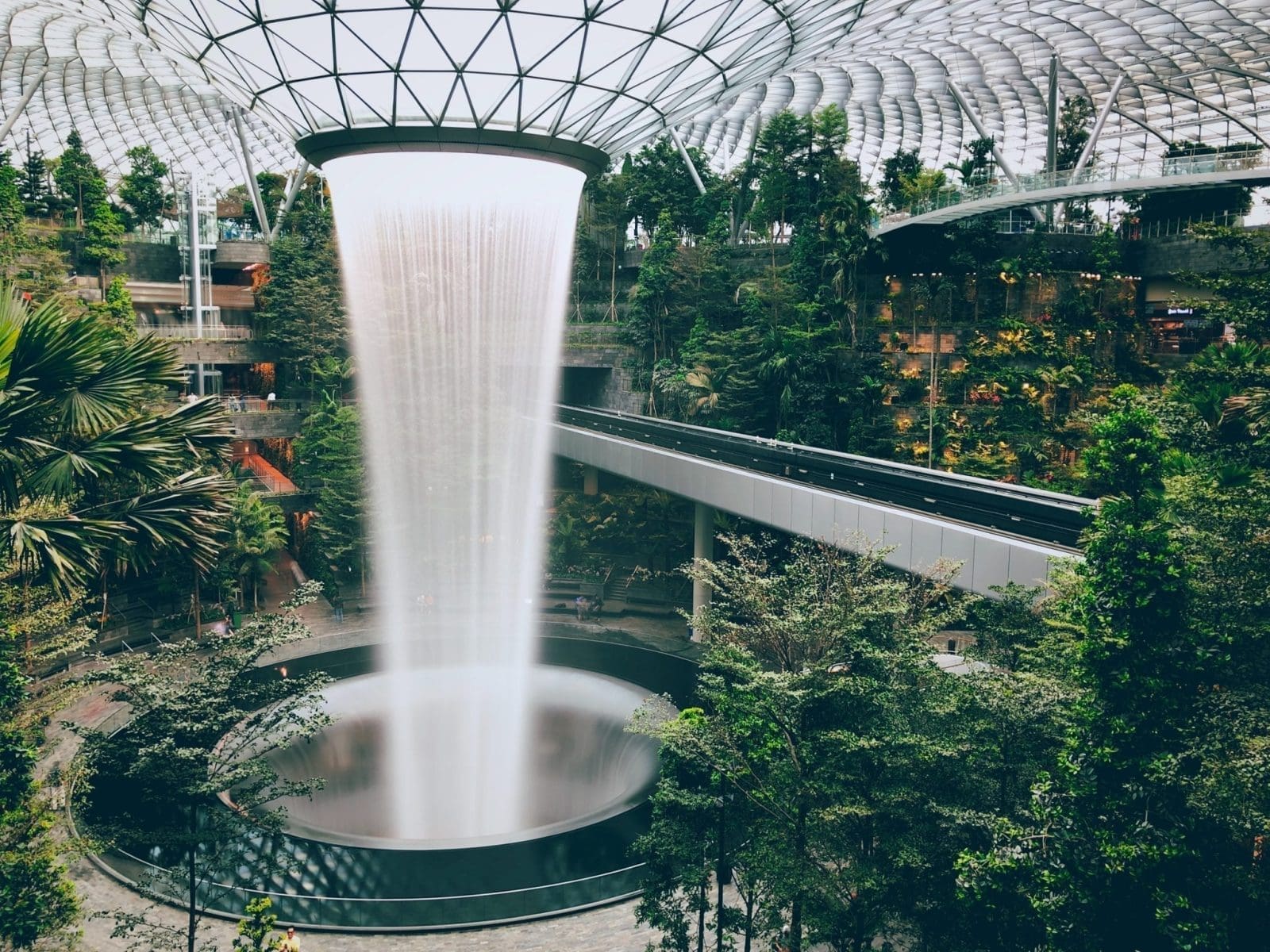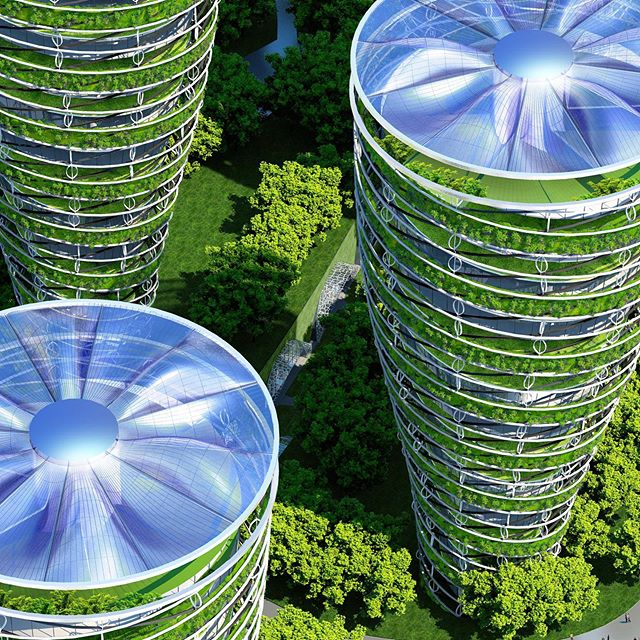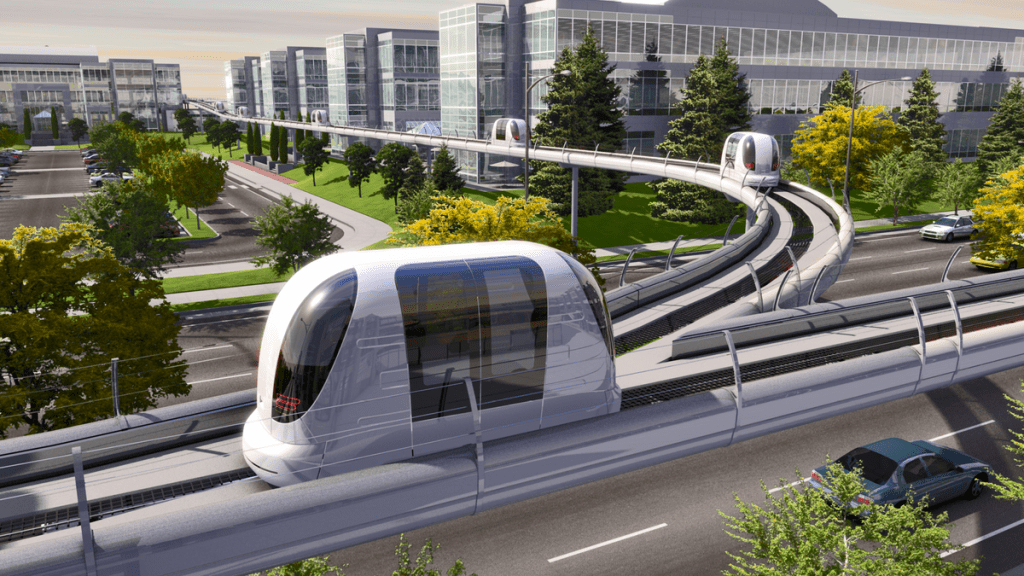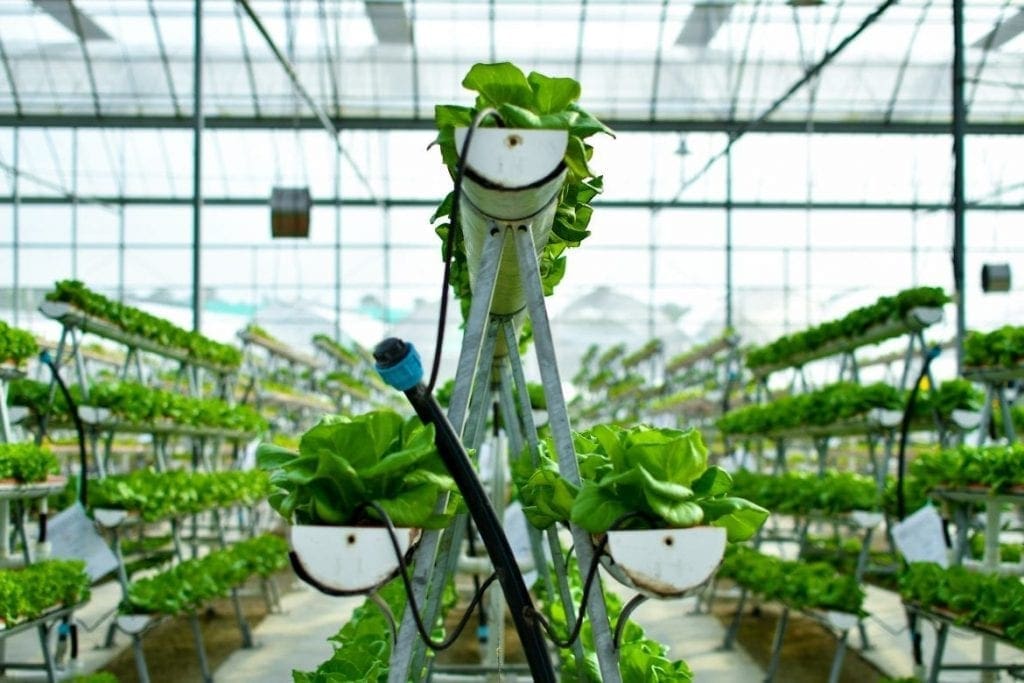In the next 30 years, cities worldwide will be forced to change in ways never seen before. Sustainability will no longer be an enticing feature; it will be the driving force behind any major city. Sustainable cities of the future will be bigger, greener, and more intertwined with technology. There will be multiple instigators behind this shift. Climate change and advancement in technology are the obvious ones, but they’re unlikely to be the most potent forces. The main reason cities will be forced to become significantly more sustainable will be due to population surges.
The world’s population is expected to reach 9 billion by 2050. This is up from the current figure of 7.8 billion. These numbers have been on a significant rise for some time now, as we’ve seen a jump of nearly 2 billion just in this century alone. This population growth presents troubling implications for the world economy, climate change, resource availability, quality of life, and much more. Humanity will have to adapt.
Our world is already changing. Planning for this growth has been well underway for some time, and exciting ideas are starting to come to fruition. With the advent of smart technology and a greater emphasis on protecting the environment, we’re closer to the cities of the future than we realize. We’ve already seen surface-level changes: more bike lanes in cities, a renewed emphasis on recycling and clean energy, and further accessibility of public transit. There are some cities across the globe, however, that are much further ahead in regard to their sustainability practices. These cities are providing the rest of us a window into the future.
Let’s take a look at what sustainable cities of the future could look like in 2050 and which cities are already ahead of the curve:
Cities in 2050
When we think of the year 2050, most of us might think of science-fiction renditions from movies with visions of flying cars and a world driven by gadget-like technology. While we should expect life to be more intertwined with advanced technology, we should also know that the main priority is likely going to be sustainability. The popular buzzwords of today’s world like “smart” technology, “organic” sourcing, and emphasis on “natural” resources will become the predominant themes of living. Likely out of necessity more so than popularity.
Here are some of the most probable features we can expect in the cities of 2050:
Densely-Packed Cities
Out of the population of 9 billion in 2050, 70 percent are expected to live in cities. Cities will be more densely packed than ever before. We can expect a greater emphasis on quality of life and ensuring citizens have accessibility to reduce the negative effects of overcrowding. This enhanced accessibility likely will involve streamlined access to nature, technology, desired services, and practically anything that can improve one’s quality of life. Accessibility will be at an all-time high because it’ll be a necessity to keep cities thriving. With more people, that also means an even greater need for sustainable practices. There will have to be city-wide and even worldwide buy-in to avoid the legitimate threats of pollution, dangerous air quality, resource shortages, and much more.

Localized Communities and Urban Hubs
As cities of the future face higher density, there will be a need to create more localized communities. The goal here will be to reverse a practice known as “urban sprawl,” which we see too much of right now. Sprawl refers to growth and development across large land areas, with very low density yet significant environmental implications. For example, suburbs are the most common form of sprawl. These suburban areas can create some economic development, but ultimately it’s hard to argue that it’s enough to overrule the negative environmental and resource impact. If we continue with sprawl, we’ll run out of space, permanently damage the environment, and have severe resource shortages; it’s just not sustainable. Especially in the U.S., we can see with any major city a non-stop outward development in the areas surrounding the cities.
The way we’ll likely combat this by 2050 is via “urban hubs,” which are localized communities that include mixed-use buildings and developments. Instead of one city center, there might be five or so urban hubs throughout a city. Architects will design buildings for all-in-one use: residences, workspaces, social hangouts, farming, etc. This creates an entire localized community of everything one might need to maximize space and reduce the carbon footprint per person. Modern technology will play a significant role here, making buildings and communities more useful and enjoyable. Within urban hubs, we can also expect more integrated communities between age, class, and much else. National Geographic provides a great breakdown of these urban hubs and much else here.

Redefined Transportation
As you might expect, transportation in 2050 will likely be entirely different. However, it’s probably not going to be what most of us might’ve expected. The big talk nowadays is self-driving cars, but their future might not be all that bright in reality. Even with zero-emission cars, there are potential pitfalls from a sustainability perspective. Vehicles, emission-free or not, cause cities to be far less efficient, make it much harder for other forms of transportation to grow, and use up a good deal of resources. Streets in 2050 will likely be less present and instead will favor more space for pedestrians and alternative transportation. Cars go against the idea of reducing sprawl and make city experience less enjoyable by the area they take up and the impact they have. They’ll probably still be around, but maybe not to the extent that we’d expect.
Public transit will become more prevalent and should be safer, more affordable, and highly efficient. High-speed and automated travel likely will be the status quo. In the City of Miami, for example, officials already have plans in place to start developing personal rapid transit vehicles, like the ones seen in the design below. Another interesting element here is the role drones will play. It seems no matter what, they’ll be of value in some significant way, but one idea is the potential for drone transportation and use in public transit by 2050.

Smart Cities
Technology in 2050 will need to first and foremost aid sustainability. The tech sector is already becoming more involved, and we can expect that trend to continue. Cities will be driven by smart technology that’ll make people connected in more ways than before and hopefully boost city-life experience. Efficiency will be vital, and that’s where artificial intelligence and automation come in. They’ll likely be the backbone of the economy and everyday life.
We’ll have some hoops to jump through first when it comes to artificial intelligence and automation. As we can see even in 2020, this technology has both positive and negative side effects on human life. Hopefully, by 2050, AI and automation will serve solely as a significant benefit to humanity and help us be more efficient, have greater work-life balance, and help economies thrive. We can also expect cities of 2050 to include virtual and augmented reality technology as a mainstream feature of society. Such technology will continue to change the way we interact, as we’re all very familiar with here in 2020.
Increased Biodiversity & Revamped Resources
As mentioned, one of the biggest threats to worldwide population growth is resource shortages. Therefore, we can expect cities of 2050 to be completely self-sufficient—or at least that’s the hope. Cities will have more extraordinary biodiversity by preserving local ecology and making cities “greener.” Therefore, the natural environment will be much more protected, and areas in and around the city can hopefully be core resource production sources. It also means more creative ways of generating resources, with concepts such as vertical farming, underground farming, and even rooftop farming.
Some vertical farming concepts are already in the works. While there is still a ways to go, more advancements in technology will allow such to be possible in the future. We will need much more protection of natural environments both in and around cities. Cities will need to be self-sufficient to meet the increasing demands of population growth. This applies not only to resource production but to energy sources as well. Cities will have to, at the very least, create as much energy as they use. Sustainable cities of the future will redefine the phrase “concrete jungle,” becoming more of a literal expression than a symbolic one.

What’s Happening Right Now?
Though the features outlined above might seem far-out, some of these ideas are already underway in cities across the globe. Several cities are worth paying particular attention to now and in the coming years, as they’re functioning as the sort of trial runs for developing sustainable cities of the future. There are two cities I specifically wanted to highlight because they show two different but equally successful approaches to creating a sustainable modern city. With that said, let’s take a look at what’s happening in Singapore and Copenhagen.
Singapore
Singapore is a truly unique place, serving as both a city and a country, a true city-state. It also has undergone such tremendous change in the last 50 years, perhaps like never before seen. In 1965, the city-state was struggling economically, was heavily polluted, and was far from a desirable place for tourists and investors. Fast forward to 2020, and it’s one of the greenest and most modern cities in the entire world. The city is perhaps the best model for how sustainable cities of the future will look.
Singapore is a densely packed city but places significant emphasis on quality of life and sustainability. Citizens have proximity and accessibility to all they need, such as schools, entertainment, shops, healthcare, and affordable public transit. Buildings are extensively intertwined with both natural and produced biodiversity under the green initiatives. Overall, the city-state is exceptionally accessible, is mostly self-sufficient, protects and promotes biodiversity, and is the closest city to what I outlined above in the entire world.
Copenhagen
Copenhagen is another world leader in sustainability but offers a different approach than that of Singapore. While Singapore has undergone a complete overhaul in development, Copenhagen has stayed relatively the same but has instead overhauled its sustainability practices. I like to think of Singapore as the desired future of cities, whereas Copenhagen is the more realistic future for cities to model in the coming years. Copenhagen has revamped its sustainability practices to become one of the world leaders. Take a look at this short clip to see how:
How We Move Forward
Singapore and Copenhagen are beautiful examples of redesigning and refocusing our cities to become more sustainable. But if we’re to get to a point where such cities are common, there are hoops to jump through first. Perhaps the most obvious is the financial impact. These initiatives undertaken by both cities are costly, and it’s ultimately the local citizens that feel the burden. The cost of living in Singapore and Copenhagen is exceptionally high—among the most expensive in the world. Ultimately, sustainability should save money and reduce costs down the road; however, it’s the initial financial burden that poses the biggest drawback for most cities worldwide.
Another big hurdle, particularly in the U.S., is complete buy-in to sustainability. The only way we’ll ever reach the ideal sustainable cities of the future is by the full support of people. In the 2019 Freethink feature video on Copenhagen, you can see that despite how expensive such measures are, the citizens have entirely bought in, which aided tremendously in advancing the initiatives.
Despite the challenges cities are facing due to COVID, now could be the best time to start considering sweeping changes. Money and citizen buy-in makes this problematic. But I wonder if cities will ever have an opportunity like right now to start making real adjustments. There’s a lot at play here, and it’s easier said than done. But looking at New York City, for example, it’s possible that rethinking sustainability practices could help propel the city forward.
One way or another, communities worldwide will have to make profound changes to be more sustainable by 2050. Why not start sustainable cities of the future, now?
Garrett is a writer at The Digest. He currently lives in Astoria, NY, and loves writing about topics that make readers think. His passions include film, sports, traveling, and culture.
- Garrett Rutledgehttps://thedigestonline.com/author/grutledge/
- Garrett Rutledgehttps://thedigestonline.com/author/grutledge/
- Garrett Rutledgehttps://thedigestonline.com/author/grutledge/
- Garrett Rutledgehttps://thedigestonline.com/author/grutledge/


